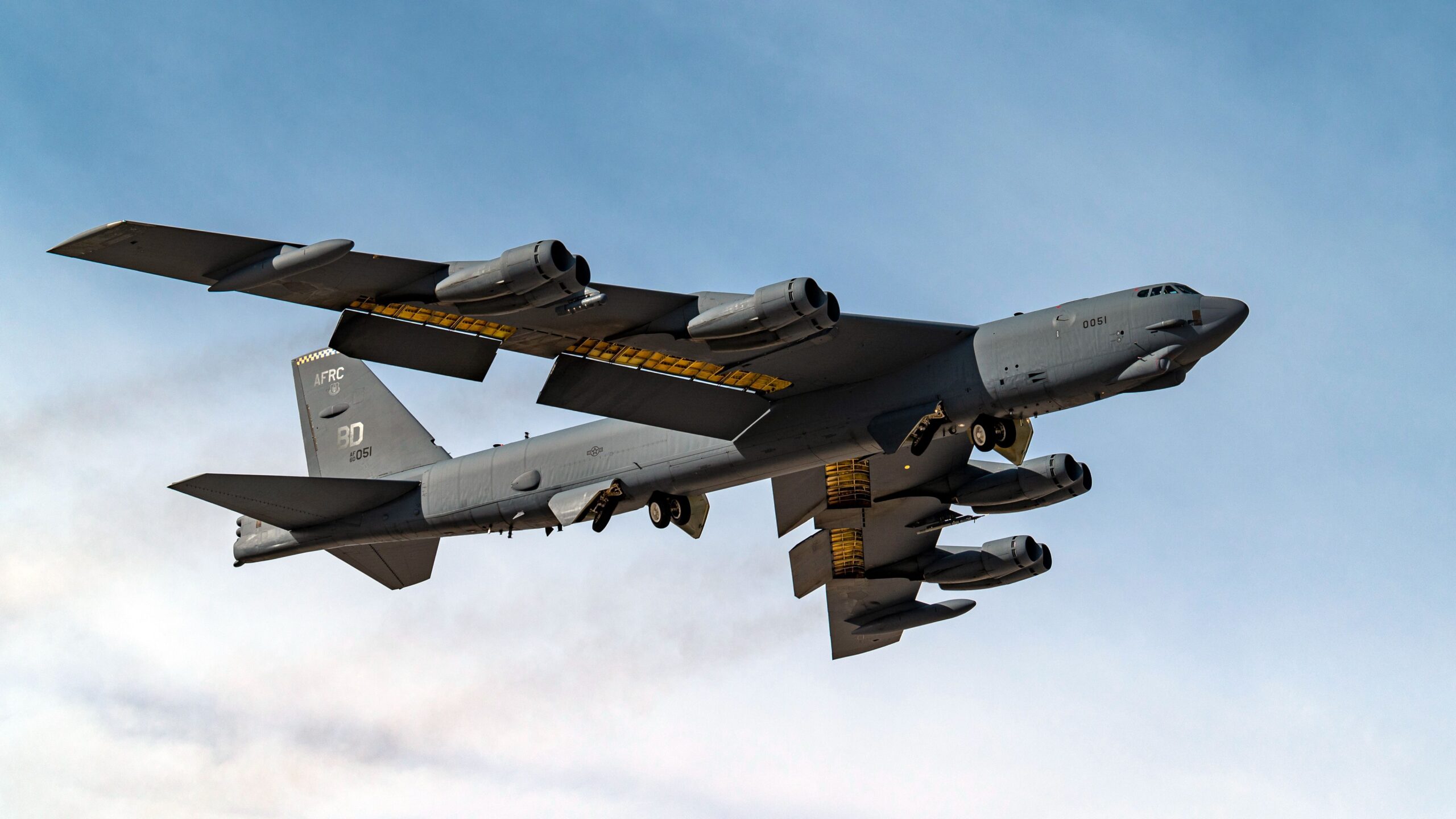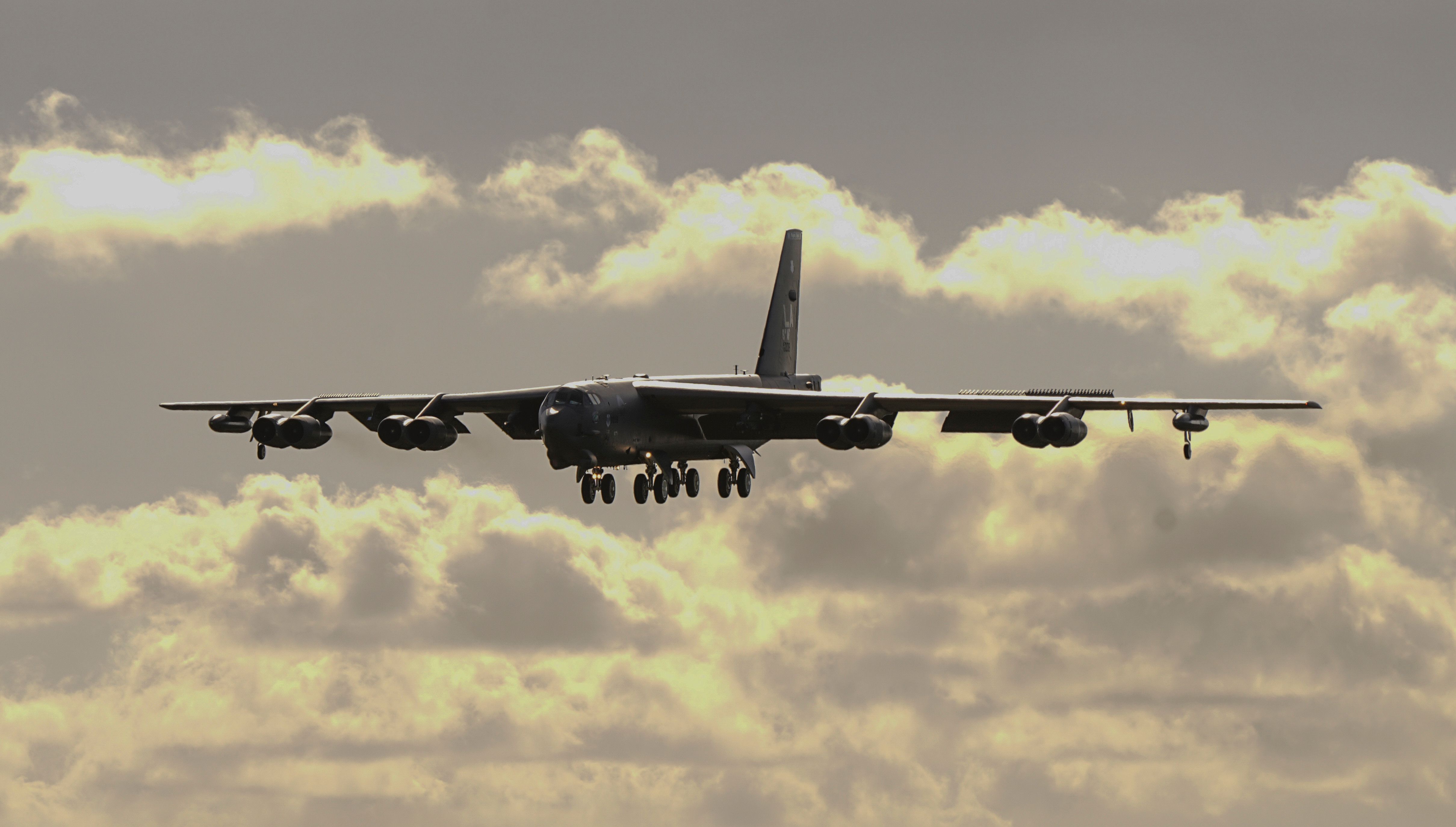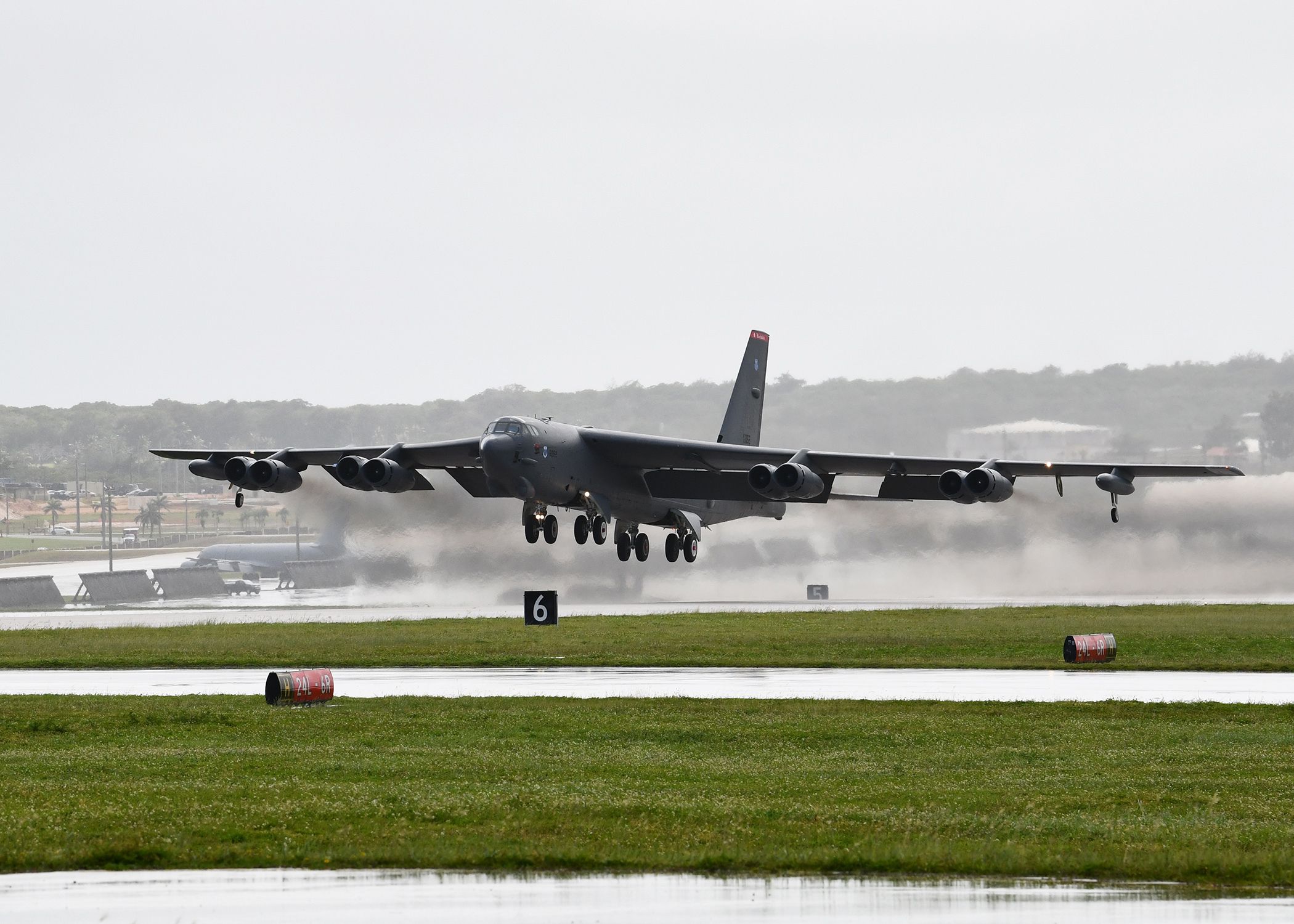Summary
- Despite being in service for over 70 years, the USAF still operates 72 B-52 bombers.
- The B-52 was originally designed with turboprop engines before being revised for jet engines
- The strategic bomber is expected to remain active with the USAF until 2050, receiving upgrades.
The Boeing B-52 Stratofortress is a long-range strategic bomber designed and developed by Boeing in the early 1950s. The type has been in service with the United States Air Force (USAF) for over 70 years. The National Aeronautics and Space Administration (NASA) has been operating the type for over 40 years. The B-52 has the capability of 70,000 pounds (32,000 kg) of weapons and a combat range of 8,800 miles (14,200 km). Despite entering service with the USAF over seven decades ago, the USAF still operates 72 examples of the type.
Following Japan’s surrender on September 2, 1945, the American military was looking for a long-range strategic bomber capable of performing worldwide missions without the need to use foreign bases. The plane needed to cruise at 300 mph and have a combat range of 5,000 miles. The request got three companies to bid: Boeing, Consolidated Aircraft, and Glenn L. Martin Company.
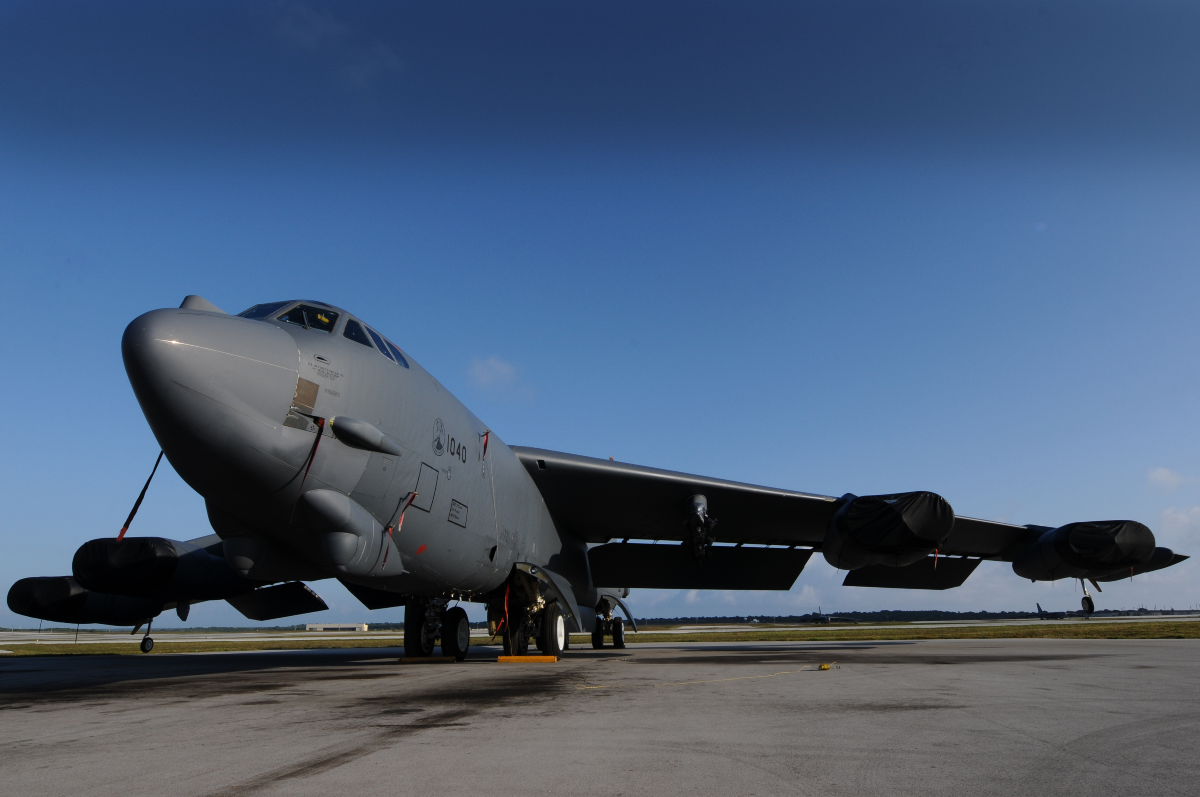
Related
Wow: USAF May Fly B-52 Bombers For Over 100 Years
The aircraft was initially going to be powered by turboprops
- Length: 159 ft 4 in (48.5 m)
- Wingspan: 185 ft 0 in (56.4 m)
- Height: 40 ft 8 in (12.4 m)
- Max takeoff weight: 488,000 lb (221,323 kg)
- Fuel capacity: 312,197 lb (141,610 kg), 47,975 U.S. gal (181,610 L)
- Powerplant: 8 × Pratt & Whitney TF33-P-3/103 turbofans
- Thrust per engine: 17,000 lbf (76 kN)
- Maximum speed: 650 mph (1,050 km/h, 560 knots)
- Cruise speed: 509 mph (819 km/h, 442 knots)
- Combat range: 8,800 mi (14,200 km, 7,600 NM)
- Service ceiling: 50,000 ft (15,000 m)
Despite not having the required range, the Boeing Model 462, powered by six Wright T35 turboprop engines, was declared the winner. Worried about Boeing’s design, the Air Force kept changing its criteria, forcing Boeing to adapt the plane to meet their needs. By the late 1940s, technological advances in aviation had the USAF asking Boeing to fit the aircraft with jet engines and make it capable of being refueled in the air. This resulted in another revision, with the aircraft now being powered by Westinghouse J40 turbojet engines.
Photo: USAF
After many discussions and back-and-forth meetings between the Air Force and Boeing, it was agreed that Boeing would build the “B-47 Stratojet.” The aircraft featured a 35-degree swept-back wing and was to be powered by eight jet engines paired in four underwing pods.
Despite calls for further revisions and the possibility of canceling the order and starting a new competition, the USAF agreed to what would become the Boeing B-52A. On April 15, 1952, the B-52 flew from Boeing Field in Seattle, Washington, to Larson Air Force Base in Grant County, Washington. After building only three B-52As, the Air Force requested several revisions, resulting in the B-52B being a much-improved bomber with new turbofan engines.
The B-52 entered service with the USAF in 1955
Currently operated by three wings
- The 2nd Bomb Wing – Active force
- The 5th Bomb Wing – Active force
- The 307th Bomb Wing – Reserve force
On June 29, 1955, the B-52 entered service with the 93rd Heavy Bombardment Wing at Castle Air Force Base, California. The USAF then replaced its exciting Convair B-36 Peacemaker bombers on a one-to-one basis. On May 21, 1956, a B-52 was used to deploy a Mk-15 nuclear bomb on the Bikini Atoll testing range in the Marshall Islands.
Photo: USAF
During the early years of the Cold War, B-52s performed high-altitude airborne patrols near the borders of the Soviet Union to provide a rapid response to a Soviet attack. This practice changed following the shooting down of a U-2 spy plane by a surface-to-air missile on May 1, 1960. The incident caused the Air Force to change the B-52 to a low-level penetration bomber to use the surrounding terrain to avoid being detected by radar or hit by ground-fired missiles.
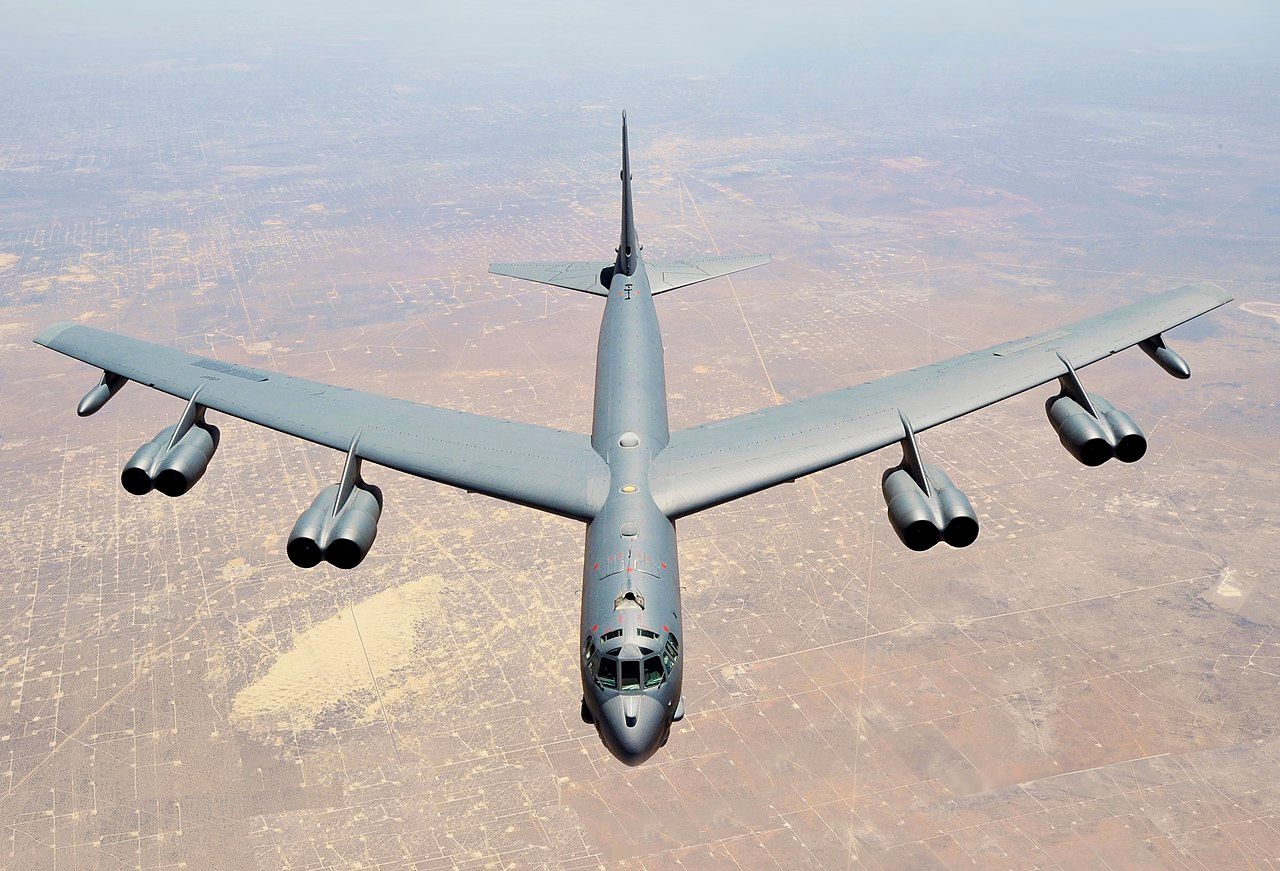
Related
Unbelievable: How A Boeing B-52 Stratofortress Once Flew & Landed Without A Tail
The B-52 has been in service for more than 60 years.
As highlighted by the Air Force, Boeing B-52 bombers were used in combat for the first time on June 18, 1965, to strike a communist stronghold in South Vietnam before returning to Andersen Air Force Base in Guam. After the Vietnam War (1955-1975), the B-52 was not used in combat until the 1991 Gulf War with Iraq. Following NATO’s decision to bomb Serbia during the Kosova War between March and June 1999, B-52s were not used in combat again until Operation Enduring Freedom in 2001, following terrorists hijacked planes and crashed them into the World Trade Center and Pentagon on September 11, 2001.
The B-52 is expected to remain in service with the USAF until 2050
The USAF still has 72 active B-52H bombers in its inventory, operational with the following units and locations of the United States Air Force:
- 2nd Bomb Wing at Barksdale AFB in Louisiana
- 5th Bomb Wing at Minot AFB in North Dakota
An additional 18 examples of the B-52 are present with the Air Force Reserve squadron at Barksdale AFB.
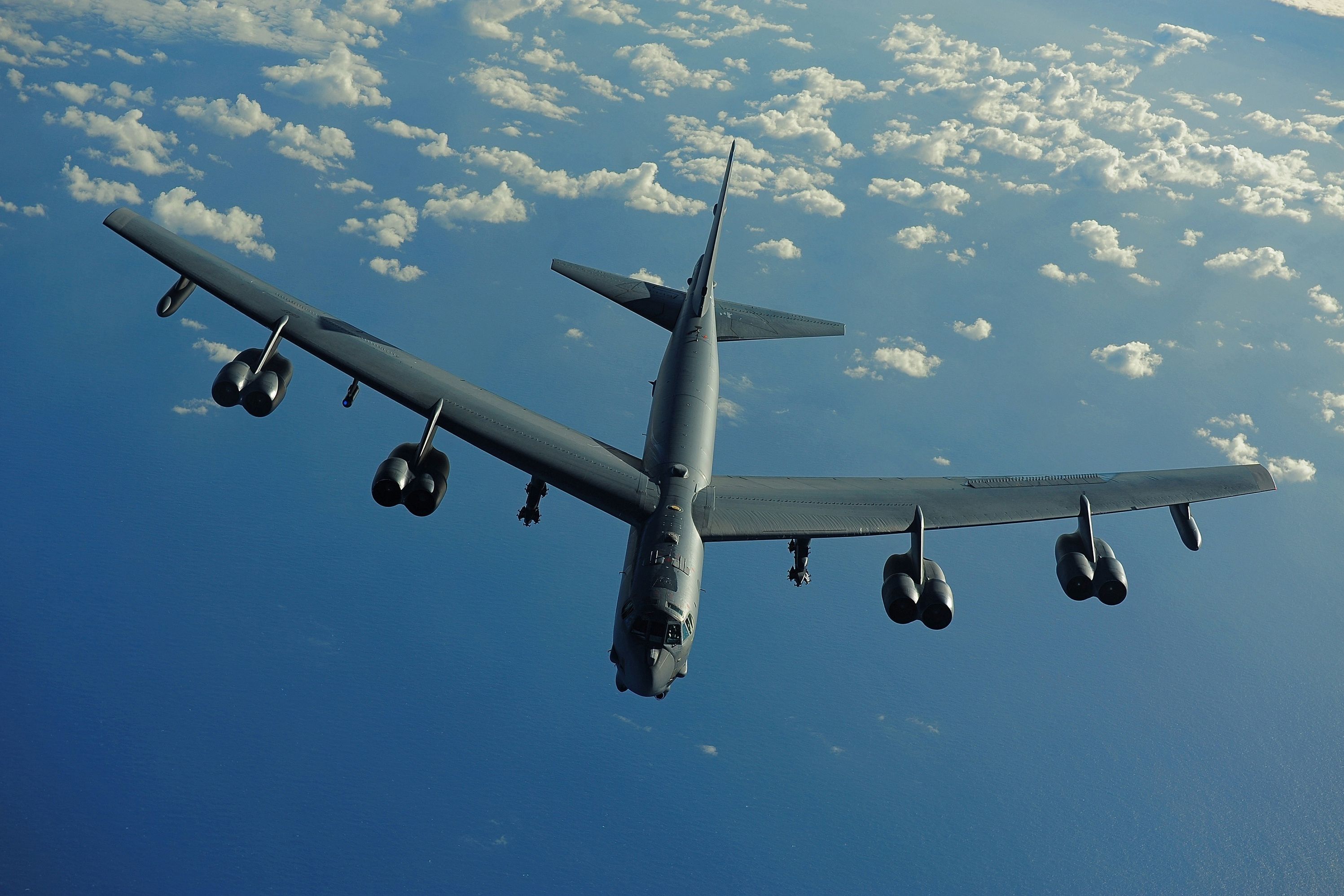
Related
How Much Longer Will The Boeing B-52 Stratofortress Remain Active?
The strategic bomber has been active for several decades; will it live on?
Between 2013 and 2015, the B-52Hs received several upgrades and are scheduled to receive new Rolls-Royce F130 engines manufactured at the company’s American factory in Indianapolis, Indiana. With the addition of the new engines, the aircraft is expected to remain in service with the USAF until 2050.

